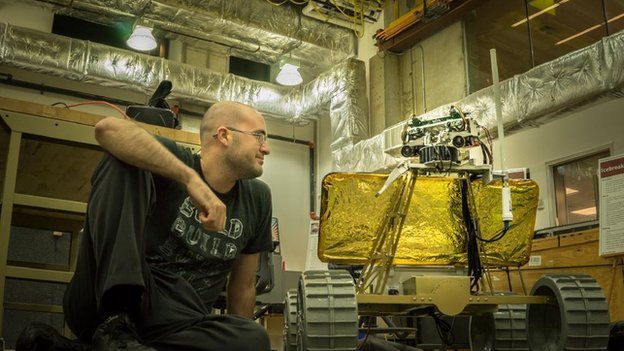New telepresence robot controlled with Oculus Rift will help explore the moon

Scientists at Carnegie Mallon University have developed a model of a robot to work on the moon. This robot should be in the "eyes" for enthusiastic researchers from Earth. Development cost - 30 million US dollars. As far as can be understood, the project cost includes the estimated cost of sending the robot to the moon.
The robot was created as part of the Google Lunar Xprize competition, which accounts for the amount of development. The project evaluation involves highly respected scientists and astronauts. This time Rusty Shvaikart, an astronaut of the Appolon-9 spacecraft, was present on the jury.
')
Scientists at Carnegie University are planning to land a robot on the moon. using a remote control system to move the robot on the surface at 500 meters, simultaneously shooting video. Unlike other devices, the new robot is controlled by an operator with Oculus Rift glasses. In this case, the robot will broadcast (with a slight delay) to the video operator. Perhaps, in the future, the video stream will be open to all comers, so that both schoolchildren and adults can look at the Moon with their own eyes.
The Astrobotic Technology University team plans to join forces with SpaceX, which will launch the robot with the Falcon 9 rocket. It is assumed that with luck and circumstances, the rocket will make its flight in a year.
“The goal of our work is very simple: let everyone who lives on Earth see the Moon live through the eyes of a robot. We do not just send a robot to the moon. We're going to get the moon here on earth. Imagine your feelings when you see rocks and craters that are billions of years old. Turn your head to the right and see the dark surface of the moon. Turn your head to the left and you will see our home, the Earth, ”said the head of the research group, Daniel Shafrir.
To achieve its goal, the research team will have to solve many smaller tasks. For example, Oculus glasses can not yet provide viewers with simultaneous two-stream video broadcasting in real time. But these are already technical details, problems that are planned to be solved in the near future.
Currently, 18 teams from all over the world are competing for the grand prize of Google Lunar Xprize.
Via bbc
Source: https://habr.com/ru/post/362193/
All Articles